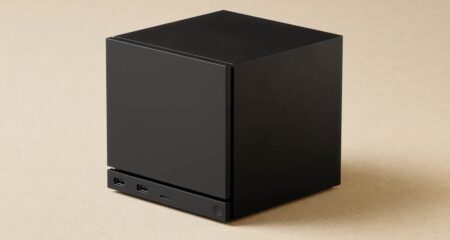
[By Craig Wilson]
Inherent obsolescence is the perpetual problem with technology. Technological advances aside, companies need to keep bringing out new products so we’ll keep buying them. Hardware manufacturers are constantly trying to convince us that the latest developments will improve our experience of media. But 3D doesn’t do that. Not yet, anyway.
When Nintendo introduced its DS, it blew Sony’s better-equipped PlayStation Portable out of water. Why? It had a familiar and non-intimidating (to the non-gamer) interface, and it was relatively cheap.
3D, arguably, has even wider appeal as it can be used for games, video, even user interfaces, or just about anything visual. Why, then, has Nintendo’s 3DS — and 3D televisions — performed so poorly? The problem is threefold: price, value and implementation.
When the original DS launched, mobile phone gaming was still poorly evolved and the Nintendo machine was cheap. Moreover, its dual screen (one touch, one regular) was novel, even in the handheld space. All of this meant that the DS was perceived as both affordable, and value laden.
When it launched, the 3DS cost R2 800. The added multi-directional control pad and the 3D screen appeared to be the only way of accounting for the extra cost and, when uptake was slow, Nintendo promptly dropped the price (quite possibly meaning a loss for the company on each console sold, hopefully to be recouped through game sales) and was forced to offer early adopters free games to try and ensure they didn’t feel they got screwed.
Similarly, makers of early 3D TVs soon found most consumers weren’t prepared to pay far more for a product that didn’t really do much more and required the purchase of expensive, heavy and battery-dependant glasses.
As with all technology, prices for 3D products are falling and will continue dropping. The glasses argument is becoming moot as manufacturers opt for the cheap and battery-free varieties used in cinemas — or the glasses-free method as used by Nintendo — but the problem of perceived value persists.
Part of the problem has to do with proprietary media. Until recently, when some 3D TVs began supporting the conversion of regular 2D content to 3D, consumers needed to buy 3D-specific media to use with their 3D devices. No one likes having to duplicate existing video collections, but HD seemed to offer a “good enough” value proposition to justify investment in it. 3D, if sales are anything to go by, does not.
Similarly, while the Nintendo 3DS supports older games, only the new ones can be rendered in its glasses-free version of 3D, and they aren’t backward compatible. That’s understandable, but it also means a slew of titles that don’t so much improve on old games as much as repackage them in the 3D format — the novelty of which wears off pretty quickly.
The DS was a compelling proposition because it offered revolutionary features, had wide appeal and came with a reasonable price tag. The 3DS, on the other hand, punts a gimmick in the guise of a revolutionary feature, which makes it seem more niche to the layman in the process — and it costs too much.
However, as Apple has repeatedly shown, price need not be a factor if a product is sufficiently compelling. And that’s where 3D TV and console manufacturers need to focus their attention. They need to make 3D appear to be a compelling necessity rather than a costly novelty.
One of the key aspects of hardware that 3D could improve is the user interface. Imagine being able to group or stack multiple shortcuts down the side of your screen, while still being able to make out those that are many rows back. Or how about combining motion technology like Xbox Kinect with 3D — just think how that could revolutionise the way we interact with hardware.
The practical implications are immense. Trainee surgeons could operate on virtual patients, brain scans could become 3D models rather than 2D images, and science, chemistry and medicine could all become far more hands on.
But until seemingly peripheral technological developments begin to improve the usefulness of 3D and improve the scope of its practical implementation, it’s likely to remain a gimmick and one that offers little over what’s possible already.
An informal survey of five friends — three of them decidedly non-geeky — reveals all of them would opt for a larger screen over a 3D-enabled one, whether it was in a gaming device or a TV.
Just as cellphone manufacturers learnt that trying to make the smallest phone wasn’t the best use of technological advances because this failed to create a better user experience, those punting 3D technologies need to reach the same conclusion.
For manufacturers and their products, there is a fate worse than death: apathy.
- Craig Wilson is a senior journalist at TechCentral
- Subscribe to our free daily newsletter
- Follow us on Twitter or on Facebook




